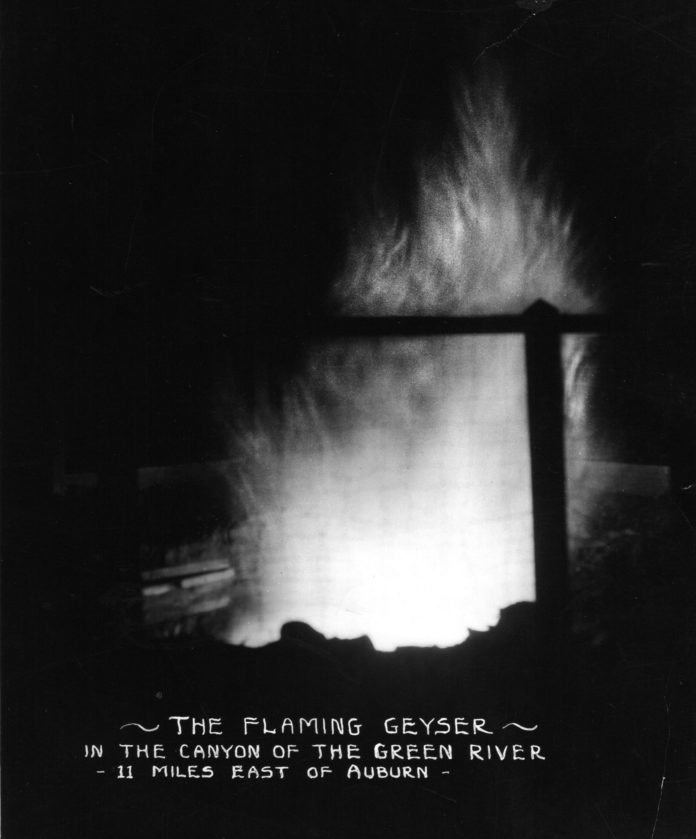In the heat of the summer it’s interesting to look back 92 years to heat of a different kind. This is the famous Flaming Geyser in all its flaming glory, as shown in a black and white photo from July 1925. The location is now Flaming Geyser State Park on the banks of the Green River. Back then it was a private park with admission of 25 cents with an additional 25 cents to stay overnight.
The resort developed a number of facilities including a dance pavilion, fountains, together with fishing, hiking, and camping. Seattle newspapers, in conjunction with automobile dealerships, promoted rural wonderlands like this in an effort to demonstrate personal mobility provided by improved roads and new cars. The actual Flaming Geyser, from which the park was named, derived from a 1,403 foot deep exploratory drill hole, which Eugene Lawson undertook in 1911 while searching for coal. Lawson found at least seven coal seams when penetrating into the earth. Natural gas was encountered between the 900 and 1,000 foot levels. Following abandonment, water bubbled to the surface under pressure carrying significant amounts of coal-bed methane. When ignited the gas burst to flame high in the air. A later attempt to enlarge the geyser failed and restricted the natural gas flow while reducing the flame potential to something resembling a Bic-lighter.
This image comes courtesy of JoAnne Matsumura, an Issaquah historian and research specialist. Over the next two weeks this column will examine different aspects of the Flaming Geyser resort of the 1920s and it eventual conversion to the State Park it is today.







